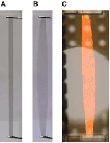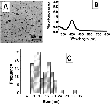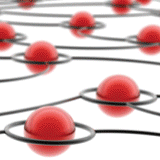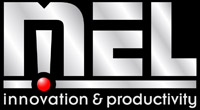| Email not displaying correctly? View it in your browser. |
 Volume
2 Issue 4 - April 2009
Volume
2 Issue 4 - April 2009 |
|
The NNN Newsletter
Nanomanufacturing Testbeds: Unique Opportunities for Industrial-Academic-Government Collaborations
Researchers involved in a broad range of science and technology enabled through nanoscale materials and phenomenon are reporting discoveries and innovations with increasing frequency. As these breakthroughs involve academia, industry, and government researchers, the next step in many cases is to understand the range of applications that would benefit from the research results and who the stakeholders would be. While the applications and benefits may be obvious, bringing a technological innovation to the product level is not always as straight forward as developing a business plan or partnering with an industry leader. Typically the innovation must be further developed such that design, manufacturing, reliability, and yield issues are addressed to achieve the necessary economy of scale for a competitive product. These concerns in general are not unique to nanotechnology and nanomanufacturing, although some considerations are. These involve the existing infrastructure, capabilities, and tools enabling further investigation into and development of the technologies being reported by research laboratories worldwide. One model that addresses these issues is the testbed. Testbeds provide a critical platform to bridge the gap between laboratory innovation and product implementation and to better understand the financial and societal benefits provided therein. Over the coming months the NNN plans to highlight testbed programs around the United States, providing an overview of the goals, strategy, and outcomes of each. We will also seek input and feedback on these programs so that the appropriate information and results are shared with stakeholders, who may evaluate the technologies and further proliferate the capability for specific application areas. With this goal in mind, the NNN invites contributions of ideas, examples, and outcomes from testbed programs relevant to nanomanufacturing, and will work with the community at large to feature these through our online information clearinghouse, InterNano. Regards,
|
Upcoming Events May 3 - 7, 2009 May 11, 2009 May 12 - 14, 2009 May 14, 2009 May 16 - 17, 2009 May 18 - 21, 2009 Affiliated Centers Recently Published Multidimensional Separation of Chiral Amino Acid Mixtures in a Multilayered Three-Dimensional Hybrid Microfluidic/Nanofluidic Device Bend, Buckle, and Fold: Mechanical Engineering with Nanomembranes Multiplexed electrical sensor arrays in microfluidic networks Effect of Cross-Linking on the Diffusion of Water, Ions, and Small Molecules in Hydrogels Functional DNA directed assembly of nanomaterials for biosensing Directed Assembly of Polymer Blends Using Nanopatterned Templates Antibody orientation enhanced by selective polymer-protein noncovalent interactions |
|
The National Nanomanufacturing Network Newsletter Subscribe / Unsubscribe from this list. Our mailing address is: The National Nanomanufacturing Network 322 Lederle Graduate Research Center 710 N. Pleasant Street University of Massachusetts Amherst, MA 01003 Our email address is: nnn@nanomanufacturing.org Our phone number is: (413) 577-0570 Copyright (C) 2008 The National Nanomanufacturing Network All rights reserved. Supported by the National Science Foundation under Grant No. DMI-0531171. |
|

 Take a carbon nanotube, split it down the middle and flatten it: what do you get? A graphene nanoribbon. While graphene itself is a material known for its strength and conductivity--as flat sheets of linked carbon--narrow ribbons of graphene can channel electrons length-wise, turning the the graphene into a semiconductor. James Tour and Dmitry Kosynkin from Rice University report a novel way to transform carbon nanotubes into nanoribbons. Their method, a room-temperature, chemical process, relies on sulfuric acid and potassium permanganate to effectively "unzip" the tubes. The process has been applied to single- and multi-walled carbon nanotubes, and allows for bulk production of ribbons.
Take a carbon nanotube, split it down the middle and flatten it: what do you get? A graphene nanoribbon. While graphene itself is a material known for its strength and conductivity--as flat sheets of linked carbon--narrow ribbons of graphene can channel electrons length-wise, turning the the graphene into a semiconductor. James Tour and Dmitry Kosynkin from Rice University report a novel way to transform carbon nanotubes into nanoribbons. Their method, a room-temperature, chemical process, relies on sulfuric acid and potassium permanganate to effectively "unzip" the tubes. The process has been applied to single- and multi-walled carbon nanotubes, and allows for bulk production of ribbons.
 Approaches to mechanical actuation have continuously been investigated for a range of existing and future applications, most notably as artificial muscle. Recently, Aliev et. al. from Ray Baughman’s group at the University of Texas-Dallas reported on their investigation of carbon nanotube aerogels exhibiting giant-stroke, superelastic properties. Their aerogel sheets exhibit behavior similar to low-modulus rubbers when stretched in sheet width direction by factors up to 300% thereby making this material an ideal candidate for large stroke actuation.
Approaches to mechanical actuation have continuously been investigated for a range of existing and future applications, most notably as artificial muscle. Recently, Aliev et. al. from Ray Baughman’s group at the University of Texas-Dallas reported on their investigation of carbon nanotube aerogels exhibiting giant-stroke, superelastic properties. Their aerogel sheets exhibit behavior similar to low-modulus rubbers when stretched in sheet width direction by factors up to 300% thereby making this material an ideal candidate for large stroke actuation.
 Silver nanoparticles have been shown to exhibit antimicrobial activity, but their mechanisms of toxicity are unclear. A recent study by AshaRani, et al., proposes the mechanism of toxicity of starch coated silver nanoparticles in human lung and brain tumor cells is through disruption of the mitochondria, the main source of energy for the cell. Results indicate that an exposure to nanosilver may lead to a decrease in metabolism at the cellular level. However, further investigation is needed to determine if silver nanoparticles are safe for biological and medical applications.
Silver nanoparticles have been shown to exhibit antimicrobial activity, but their mechanisms of toxicity are unclear. A recent study by AshaRani, et al., proposes the mechanism of toxicity of starch coated silver nanoparticles in human lung and brain tumor cells is through disruption of the mitochondria, the main source of energy for the cell. Results indicate that an exposure to nanosilver may lead to a decrease in metabolism at the cellular level. However, further investigation is needed to determine if silver nanoparticles are safe for biological and medical applications. 





